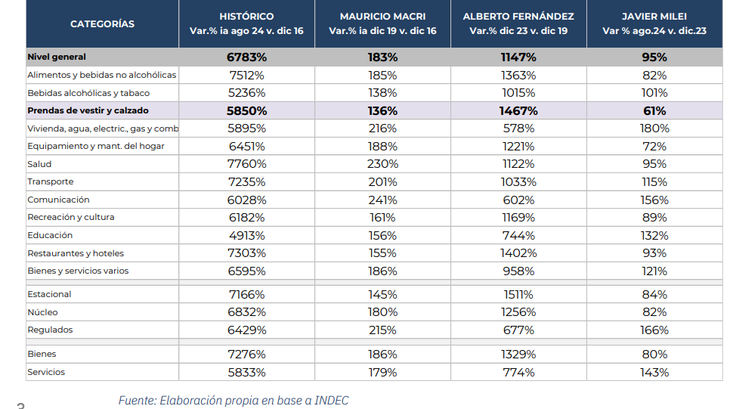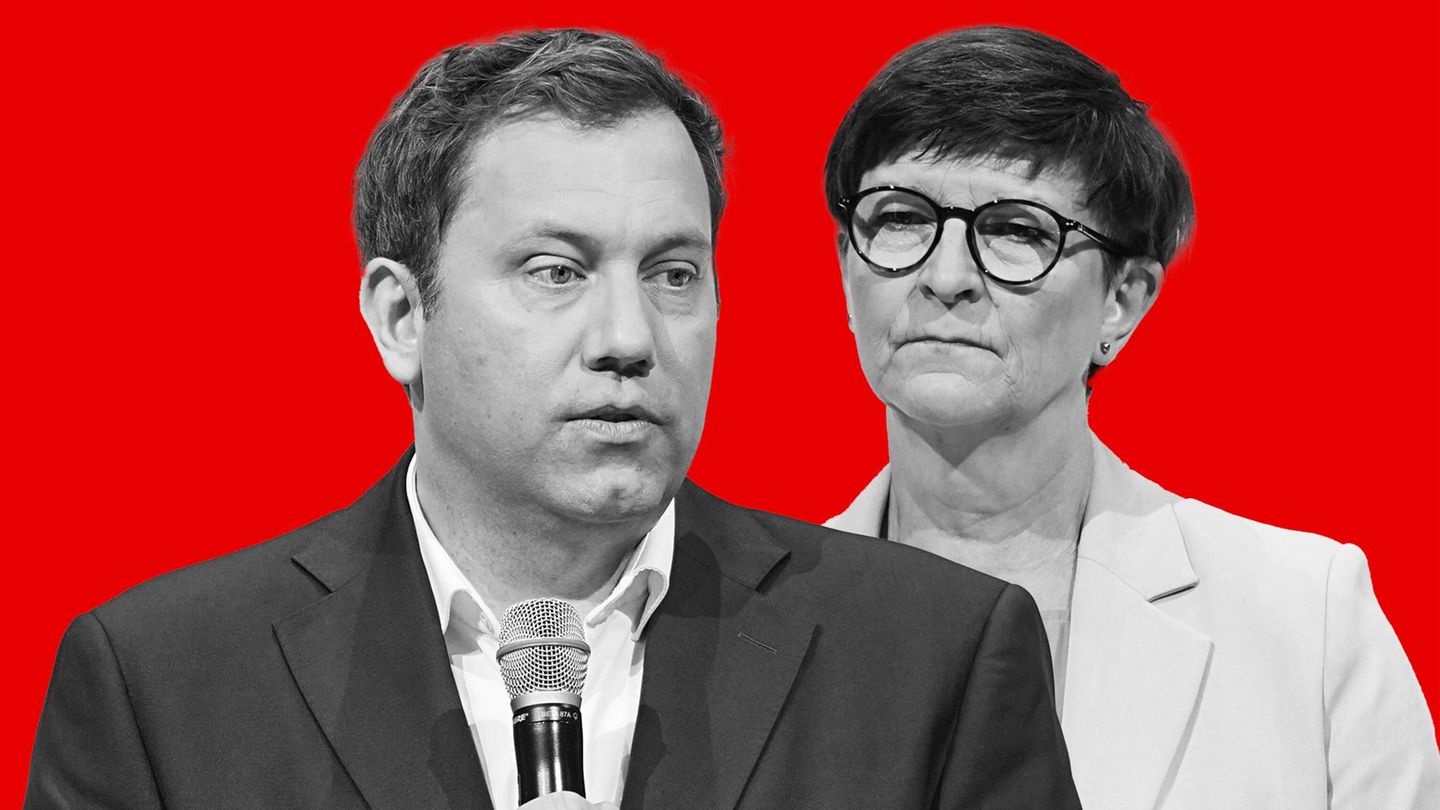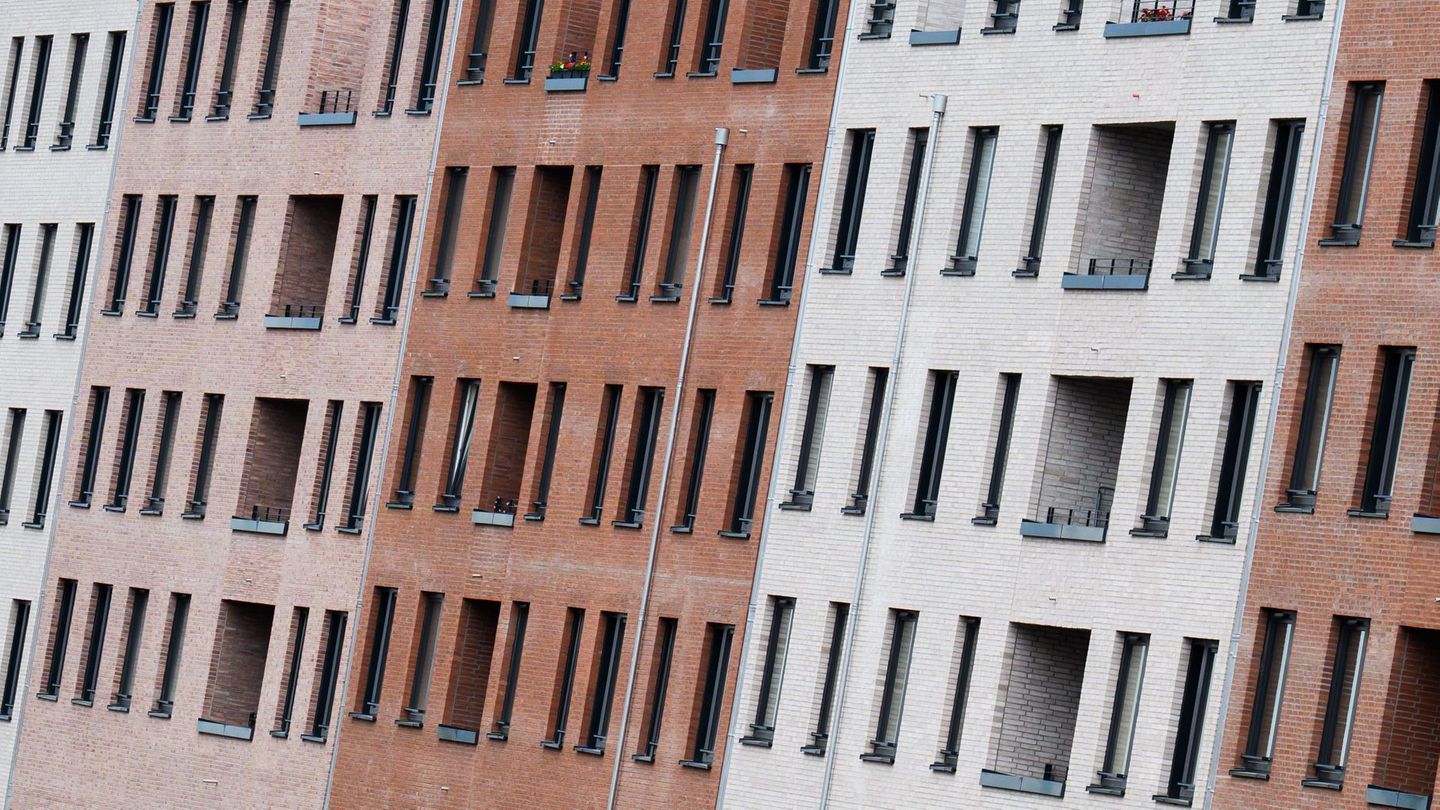Are clothes more expensive in Argentina? Although textile entrepreneurs do not deny this is happening today, they point out that the great gap occurs “downstream” in the sector’s value chain. So, one one research from the Protejer Foundation warns, for example, that The price of a top brand T-shirt in a shopping center is 50% taxespecially Gross Income that appears along each link in the value chain.
The data was presented in a talk with journalists led by the president of Protect, Luciano Galfione; in which the vice president, Marco Meloni; Secretary Jorge Sorabilla, the executive director, Priscila Makari and the foundation’s economist Lucía Knorre.
In the work presented by Protejer, it is indicated that If you take the price of a top brand T-shirt from one of the stores in shopping centers, 50.3% is made up of taxes; 12.2% corresponds to financial costs; 12.7% to rentals; 9% to logistics and marketing; 4.8% to brand expenses; 2.5% goes to advertising, and only 8.5% is purely the cost of the garment at an industrial level.
protect3.png
The cost of producing a t-shirt, according to the Protejer Foundation.
Clothing: “the problem in this country is not producing, but trading”
“The problem in Argentina is not producing, that can be done competitively. The problem in this country is trade,” said Galfione. Businessmen point to the financial costs and especially taxes.
“I have a company in Salta, I sell to a client who lives in Santa Fe. I have to pay Gross Income in Salta, because the company is located, in Santa Fe because the credit card is based in that province, and pay here, because It was sold in a shopping center in Buenos Aires,” he said.
The great impact of taxes on the final price of clothing has to do with the fact that in the textile sector the value chain is broader than in other sectors. It can have up to 9 links, which in turn recharges its proportion of Gross Income, which is the cascading tax that the provinces charge. Unlike VAT, which is ultimately paid only by the final consumer, the tax is paid at each stage of transformation of the primary good.
But What businessmen question most is the Government’s idea that opening up imports serves to “discipline” prices in the domestic market. They assure that this does not happen and that in reality, it has no relationship.
protect1.png

Inflation by sectors in the different governments, according to Protejer.
“Imports grew and prices increased”
“In 2020-2023 there was a record of imports despite the external restriction, surpassing Mauricio Macri’s management of greater relative commercial openness. “Imports grew and prices increased,” says the Protejer report.
If the comparison of the national CPI for each period and its relationship with the price of clothing is taken, it is observed that in the period 2016 to 2019 general inflation rose 183%, but clothing and footwear rose 136%. In Alberto Fernández’s period, inflation rose 1,147%, while clothing grew to 1,467%. In the first 8 months of Javier Milei the CPI advanced 95% while clothing fell a little behind with an increase of 61%.
Throughout that period, The moments in which clothing rose more than inflation coincide with those in which the Government stepped on public service rates, and on the other hand, when it came to eliminating subsidies and updating the value of services, the value of clothing fell.
This is because since salaries do not rise, By setting tariffs, the Government leaves room to consume, generating a momentary “wealth effect.” As there is more demand, textile companies recover the profitability lost in the previous period, they recognize in Protejer.
protect2.png

The evolution of clothing prices, according to Protejer.
It is so The only variable that has always gone down in the last 20 years has been the real salary. Compared to October 2016, current salaries lost 25.4% of purchasing capacity, according to INDEC data. Those not registered lost much more, 55.1%.
Prices in shopping malls and outside of them
The industrialists They affirm that the INDEC overweights the participation of shopping malls in the sample it takes every month to prepare the CPI, because he continues to use the same basket as two decades ago. And precisely, it is in those establishments where the proportion of clothing of imported origin is higher and where commercial costs are also higher.
Meloni pointed out as an example that from his company he sells fabric to both large brands and businesses that sell on Avellaneda Street in Flores. “I see the pants made with the same fabric for $15,000 in Flores and $110,000 in the shopping center,” points out.
It is not that industrialists criticize large stores for their prices. They assume that in In top brands there are aspirational factors that, in some way, make the consumer validate the price at which it is offered, regardless of its quality.
Therefore, as concluded Jorge Sorabilla, one of the main directors of the Argentine Industrial Union (UIA), “Imports do not discipline prices but rather the purchasing power of salaries.”
An important fact to keep in mind is that Between December 2015 and August 2024, wholesale prices in general (at the factory door) grew 10,359%, while textiles did the same by 8,016%. They are among the 5 products that increased the least in price during the entire period, according to the business entity.
Rejection of the Fundar report
Economist Lucía Knorre refuted some of the statements recently made by the Fundar Foundation in a report, which stated that the price of clothing in Argentina is 30% more expensive than abroad.
“They use a ‘scrapping’ Mercado Libre prices, which are for resale. They include jackets that have a high weighting in Argentina, but that in Brazil, for example, are sold less,” he explained. He also questioned whether the official exchange rate of Argentina was used to make the comparisons, since if it is purchased through a platform abroad, the real price of the exchange rate is not the official one, but rather that of the dollar card that It is closer to $1,500.
Source: Ambito




